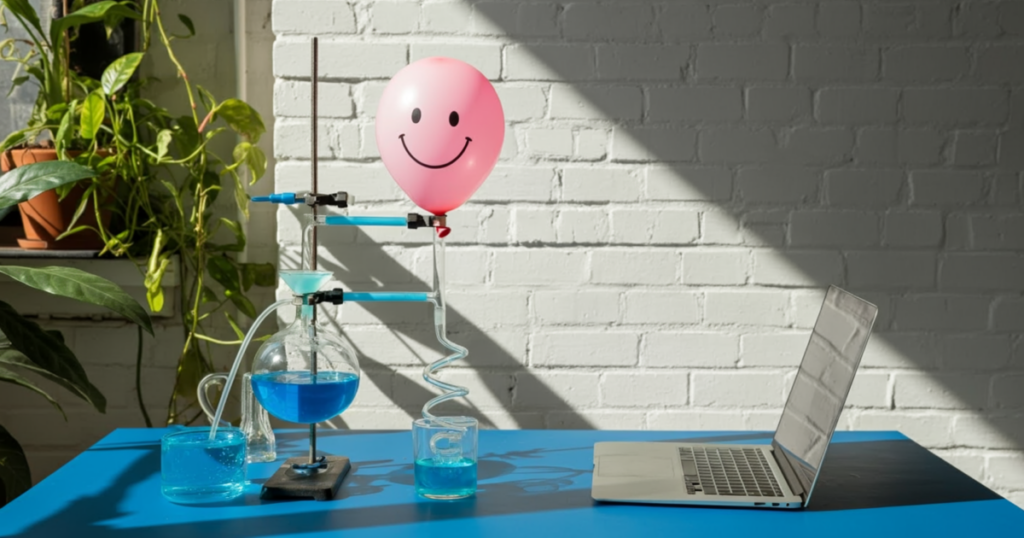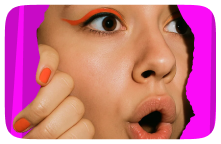Comedians need social media as a tool in their ‘Help my career succeed’ arsenal, and there’s no getting around it.
No, idle toilet tweeting isn’t going to do much for you. That much is true. Intentional toilet tweeting, though…that’s where you’ll start seeing returns on your investments, numb legs or no. And it’s not just a matter of getting people to know who you are and where/when your next giggle-gathering will be — your Instagram, YouTube, and more can be your window into real comedic insight.
If you’re as smart as you are funny, you’ll use those insights to continue developing your material.
As you learn to take advantage of your diversified social media presence, you’ll start getting into testing your material on your different platforms. Knowing how best to use the structures of various social media platforms is essential to growing as a comedian — especially now that your options for showing off your chops can go past just grinding at open mics until you catch one with a Netflix executive in it.
Testing your standup material on your socials is a fast, cheap, and effective way to workshop your bits if you learn how to do it the right way. Luckily, that’s only a matter of learning what to test, how to test, and how to best use the results!
Fair warning: the “only” in that last sentence is doing moderate lifting. You’ll need more than five spare minutes to measure anything worthwhile. Try to make a day of it, have a monthly ‘Testsmas’ type ceremony, and analyze it. You’re not going to need CPA-level calculations for anything, so don’t let the numbers part of your job get you running scared before you even start!
And you start by figuring out what you’re going to test.
So what should you test?

Getting overwhelmed choosing what you’ll experiment with isn’t just a hair dye and music festival problem. In fairness to every professional jokester, it’s not always easy to figure out exactly what you need to test with your social media accounts. For instance, you’ve got your strategy-oriented testing. Those are the questions like what the best time of day to post is or what caption length gets more responses. And while it’s absolutely necessary to go from “Good” to “Great” to “GottDANG” career-wise, that’s not what we’re getting into here. Developing useable material and your comedic persona is another testing bracket and requires your attention first.
Think of yourself as a comedic Dr Pepper. Don’t worry about his real name and educational credits; just put yourself there. Doesn’t it make sense to get those 23 flavors in order before hiring spokesmodels, bottle designers, and corn syrup miners to go about their business with sequined ties, blueprints, and sucrose excavation equipment? You’re in the ingredients testing phase here, not the marketing tests — and though they can and will overlap, you’ll want to tweak the recipe before making plays regarding the cookbook release.
But even narrowing down that much, you still have a lot to deal with here. At this stage, you’ll be comfortable knowing what kind of comedian you want to be and what material you generally want to work with. You may still go too big or too small with what you test.
Spending a load of money on elephant rentals just to see if the material for a bit you’ll only get to do if you’re booked at the Taj Mahal is probably not the move you need to make. However, you also want to ensure you’re not getting lost in the weeds with little things. Changing the color of your lipstick to see what sparks more engagement might not be worth the work it takes to experiment.
We’re not discounting the idea of random virality here. Blue lipstick could suddenly blow up the Radical Neutrals Brigade to do a takedown piece of you that goes viral for its ridiculousness and skyrocket you to opening for Patton Oswalt in a week.
It could also do nothing.
The point here is that generally speaking, you don’t want to pick your experiments with the thought that ‘This might be the one that hits big out of nowhere’ in mind. Concluding that your test is a failure or success based on an explosion of buzz won’t do you much good.
Here’s what will make your comedic account work for you.
Testing brand-new material
Classics never die, but you can’t do the same jokes forever. Testing all new bits will be your biggest priority. Will what’s fresh be something people are ready for, or will it be too far ahead of its time? Was the bit you’re planning on centering your next show around something that isn’t as universal an experience as you thought? Testing via your social channels will tell you.
But brand-new stuff isn’t the only material you can test.
Testing reworked old material
The world moves fast! Will your 10-minute riff on TikTok be relevant months from now? A little less so. Now that you, society, and the sea levels are all in different places than when you first wrote your older work, you can take the time to remix some of your oldies and see how the redo does.
Try adjusting the tone, updating sports and pop culture references, or adding newer music behind you. Just ensure you’re keeping up with what you changed as you change it. Experiments are nothing without attention to detail, and you’ll want to keep the updates in mind whether they gain you new followers or censure.
(You thought you were leaving spreadsheets behind in your comedy career.)
Reposted (from yourself, obviously) old material
Sometimes, people like your friends, parents, and agents will say, “People just weren’t ready,” when they want to soothe your feelings over work that went down like an unanchored bookshelf in a daycare. The thing is, it is possible that they weren’t just blowing smoke! Now and again, the issue really CAN be that your bits were a little too ahead of their time to be appreciated.
Putting your comedy on social media is a great way to have an archive to look back through — and as you’re looking, optimizing, and wincing a little, you’ll probably find material that makes you go, “Huh! This was really good!’.
Maybe it was a ‘Dude! Too soon!’ type of thing that’s darkly funny in the present day. Maybe a landmark case helped bring an esoteric facet of psychology into the public consciousness.
If fashion and video quality haven’t drastically dated what you’ve done in the past, go ahead and do a Throwback Thursday, and just re-share your oldies verbatim. You can’t plagiarize yourself, after all — and if you still think that you had something good a few years ago, by all means, see what the numbers have to say! Seeing if you were right all along could be a matter of measuring metrics.
Testing your older jokes, whether you end up reconfiguring anything or not, will be especially pertinent if you were a total unknown when that material first hit. Will your Day Ones appreciate the deep cut? Will a fresh coat of paint win over new-to-you fans? That’s the experiment.
The Exact Opposite of What DIDN’T Work
It happens to everyone — you get up on stage, do your thing, and your joke falls on its face like a drunk toddler. Bombing is just an occupational hazard, and while sometimes the issue is a matter of drink minimums, your spot in the roster, or a culture clash with that particular audience, sometimes it’s straight up that your joke wasn’t great. But every stone-faced audience has something to teach you; sometimes it’s “Do that…but completely and totally differently.”
The tricky part with this is it’ll be up to you to choose what “Opposite” means. Same material, but loud and harsh instead of playing a deer in headlights? Switching your hatred of LED high beams to an ironic love for them? Switching from an anti-yogurt bit to a pro-probiotics one?
It’s up to you; luckily, you can test and retest for free.
Memes!
‘Why memes?’
Why not? There’s no putting the short-form humor genie back in the box — this argument was over when email was new. Try using formats that take less intellectual capacity and time from an audience to pull in the interest for your longer material!
You can try experimenting with a new format — take your photos and see if you’ve got something that can take off. Store the original somewhere; people can get to it quickly if you want to see what has legs.
Also? You can play with turning your bits into memes and macros themselves. Take Mitch Hedberg’s Stoplights vs Bananas bit. That’d be easy to convert to a swipe-through-style post! Play with different formats for jokes you’ve already developed, and see how they perform!
How Do You Know When Something Works?

No one goes in the direction of a full-time comedy career because math is their favorite subject. If you’re your own social media manager, you have to activate that part of your learning to measure your results accurately. You already know what you’re looking for more of, but you have to think of it in the right context with other metrics.
So, what exactly are you measuring? A few things.
Consider different types of interactions
Not every type of click is equal to another on social media. You can usually tell what your relationship is with someone who writes out “Happy Birthday to my Number One Assassin!” on your Facebook wall is probably different from the one with someone who slaps a little like on your “Thanks for all the birthday wishes!” post later in the day.
On their face, there’s no such thing as a bad interaction (we’re not taking random cruelty in comment form or malicious shares into account here), but some might tell you more than others.
❤️Likes: These are the fastest and easiest for anyone to drop. Something makes a viewer chuckle, and they double tap, thumbs up, or upvote. They’re nice, but they’re quick. You can see appreciation here, but likes don’t always show investment. Of course, they’re nothing to be mad at, but make sure you’re also looking for deeper connections.
💾Saves: Saves can differ by platform with how long they take and the level of investment you can infer from them. Whether it’s a YouTube playlist or an Instagram general save dump, a save means someone liked your material enough to want to return to it! Nice.
👀Shares: Now, THESE are cash. True, it’s harder than ever to count on shares to ramp up your presence — evolving social media platforms make it challenging to attach a great sense of celebration to shared content that your online audience’s online audience might not even see. It’s not hopeless, though — shares reflect that someone thought your work wasn’t just good enough for them; it was worth showing others.
💬Comments: Everyone has an opinion, just like everyone has an inflated sense of how much everyone else wants to hear those opinions. But whether they’re unwanted critique, encouragement, or just a simple ‘HA!’, comments show a higher level of engagement with your material, and what’s more, all algorithms love ‘em. For now.
➕New Follows: Now we’re getting into the truly invested fans! Your new followers who aren’t bots or follow-for-follow types will be your bread and butter as your career takes off. Remember how many followers you’ve gained in a particular time frame; if you do a lot of new stuff in a month and only measure monthly, tracking what exactly people liked will be more challenging.
♾️Reposts: These are icing. Before we go into anything else on reposts, know that since they’re posted by people who aren’t you, they’ll be impossible to track with your own back end and any additional tools. With reposted material, you’ll have to go out of your way to find it, but if you’re looking at comedic pages for tips or your own amusement, the odds you’ll eventually run into your own work aren’t small!
The most likely situation is that you’ll find something like one of your bits shared in r/comedy and be able to look at how people responded to it and how many asked for your name if it’s not properly credited.
Side note: reposting is why getting a watermark on anything you put online is so important. It’s not easy to get stolen likes and shares to translate to a better awareness of your work if no one knows it’s yours. If you see reposts that don’t link to any of your pages or at least say your name, you have a couple of options.
You can get whatever platform the reposter used to take down your work or attempt to get your name on there retroactively. That can be through a message to the reposter or by leaving a passive-aggressively thankful comment from your professional page, letting people know where they can see more.
What’s the Best Way to Read Results?

Honestly? Very carefully. If you’re not going onstage as “The Standup Statistician,” this might only be relevant to your behind-the-scenes work, but it’s important nonetheless. It’s not enough just to know that numbers went up or down; you’ll need to track the peaks and valleys and learn how to read the results.
Here’s what you need to know.
What counts as significant change?
There’s a difference between an increase and a significant increase. The former is fine. The latter is important. Did your new meme get five shares? Cool! Is that above average for the rest of your material? Is it up from 0 or down from 100+? Did you just start posting a month ago, or is your social media presence old enough to drive? You’ll have to consider what counts — numbers don’t lie, but they can encourage the wrong conclusions.
When exporting your results, ensure you fully grasp reading graphs and tallying them accurately. For instance, what are your X and Y axes really? Likes to days? Or did you export the timeline in months? Did your new follower count take a nosedive? Or are you looking at just one week in a graph that you can zoom back out to look at an overall great year?
Understanding the scale of any bar graph exports is important. This one’s a geriatric pass around as a 2020 memed mistake but look at that graph scale. Obviously, a five-foot-nothing Indian woman isn’t actually the size of a prey animal compared to a 5’5” Latvian lady. But that’s what a poorly rendered, badly read graph will show you.
Keep an eye out, and make sure you’re not just skimming results. Reading is still fundamental.
What Happens Next?

You’ve run a few rounds of experiments, done your mad scientist laugh, done your “This is not what I expected at all” shower cry, and now you know the direction you’ll take your comedy career and posting presence. There’s still more BTS work to do.
Your next task is ensuring you’re thinking ahead and getting your editorial calendar and automation tools in order.
The idea here is to make sure you’re not A: Re-Reinventing the wheel regarding your next rounds of content and going off on tangents that you haven’t tested yet, and B: Keeping yourself free to make that content by not having to respond personally to every alert your apps throw out.
This approach saves you a lot of time, and that’s more time you can spend working on new bits and grabbing those giggles!
Go get ‘em.













